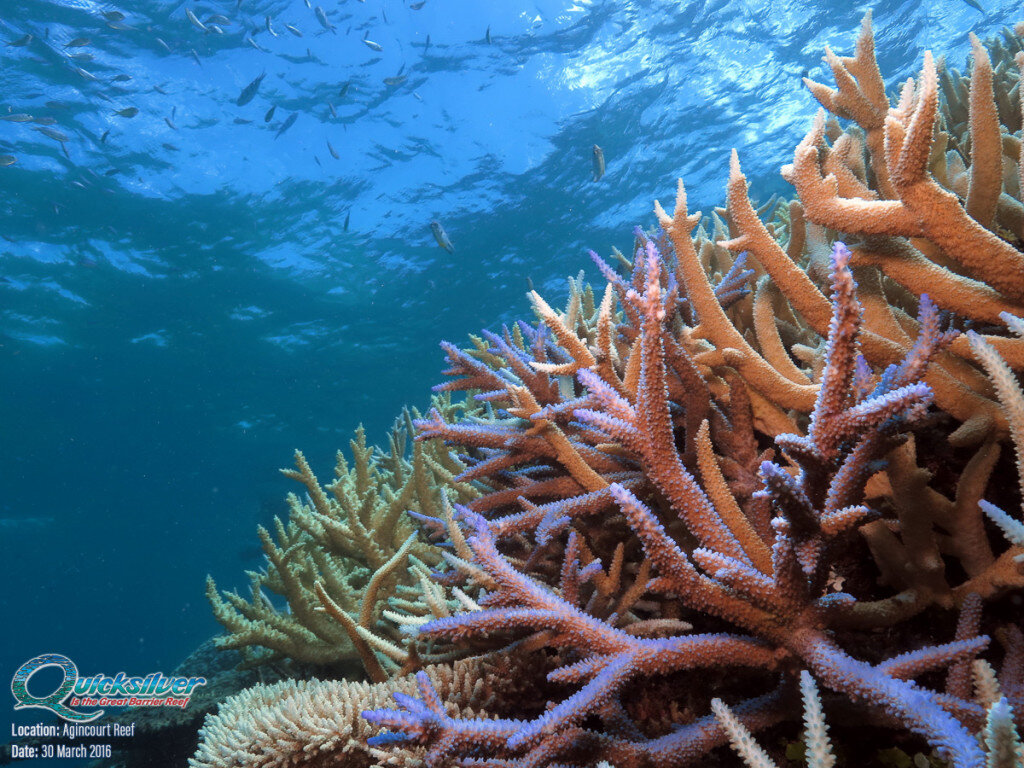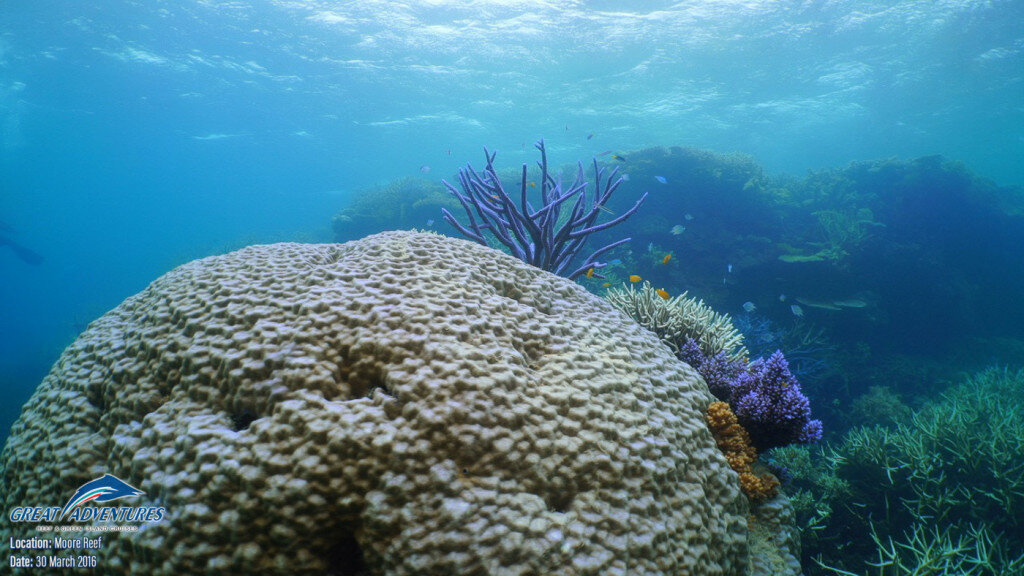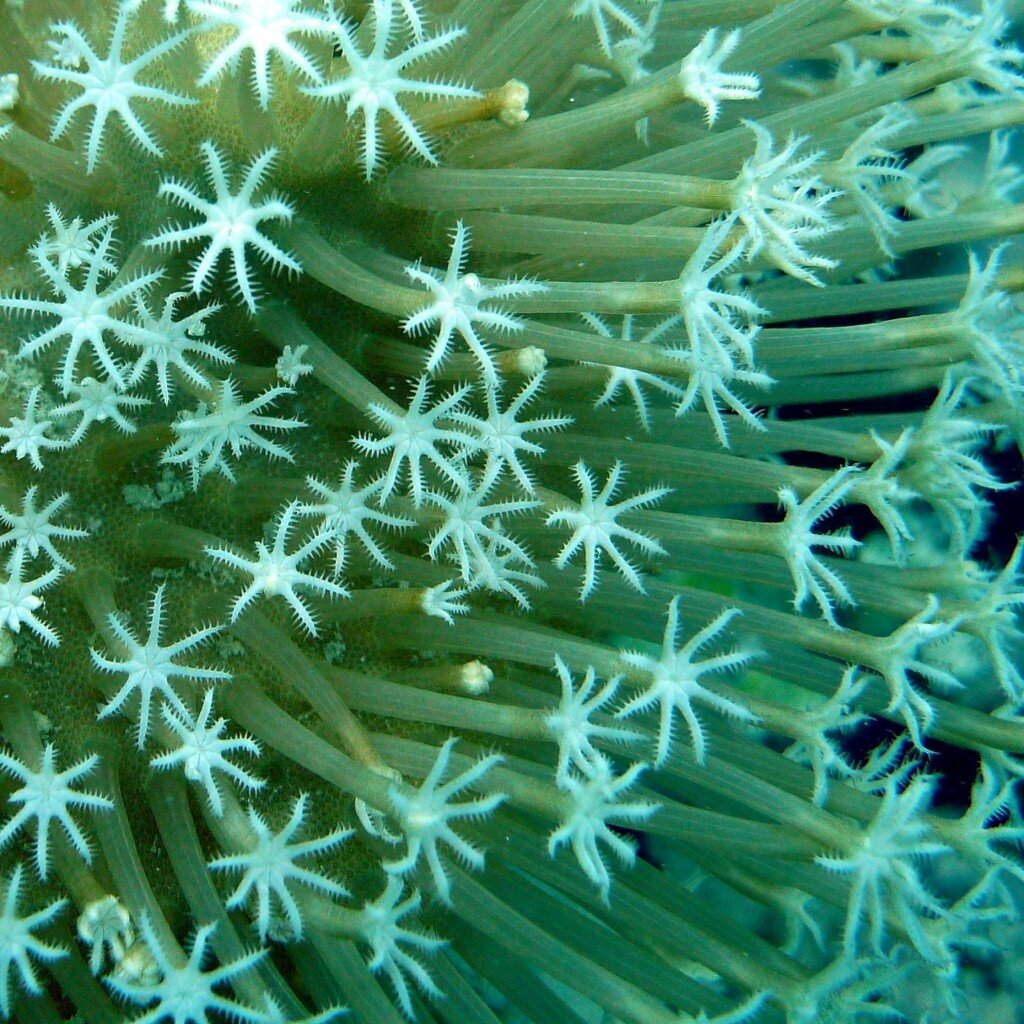Coral Bleaching PLUS 36 Great Barrier Reef Facts you may not know
Coral bleaching on the Great Barrier Reef has been making headlines around the world again!
This year (2017) more bleaching is being observed around the central part of the Reef (Cairns to Townsville), which last year escaped the severe bleaching event. In 2016 it was the northern parts of the Great Barrier Reef that underwent mass coral bleaching.
Bleaching is caused by rising sea temperatures. The coral stresses, starves and stops producing the pigments that make the colour. If the coral becomes really stressed they reject the algae as well. If things do not get better (ie the sea becomes cooler) the corals may then die.
The good news is that coral CAN recover if normal conditions return.
Many scientists have blamed Global Warming as the cause behind the bleaching and are trying to get governments, and the world to respond to this threat. You’ve probably noticed some BIG headlines lately in the news.
Here's a recent video of people's experiences on the reef:
REEF TODAY 14th March 2017 from Stuart Ireland on Vimeo.
In Australia, summer is coming to an end and as the sea temperatures drop there will be less stress on the coral. In Cairns there has been some stress and dimming of colour, but as conditions improve the coral should be able to bounce back. People may see some bleaching but as far as we know the reefs offshore from Cairns and Port Douglas are fine. The best news is that as we move into lower water temperatures the affected corals will start to recover with minimal mortality.
Click HERE for a recent update on the Coral Bleaching via the Quicksilver Group.
AND to celebrate the true awesomeness of the Great Barrier Reef I thought I’d share 36 other Great Barrier Reef Facts that you may not already know.
This FUN list on the Great Barrier Reef Facts (and the information above) has been compiled by David Witherall, a Marine Biologist who’s ‘office’ is on the reef just off Cairns. David is also the driving force behind the Naiad Project, which invites people to become guardians of the reef. Click HERE to learn about David’s work – The Naiad Project.
1. You could once walk on the Great Barrier Reef
Back when Woolly Mammoths and cavemen were walking around Europe (about 12, 000 years ago), you could walk to where the reef is now.
2. The very first Great Barrier Reef started about 600,000 years ago
The first Great Barrier Reef dried up and regrew dozens of times (every time there was an ice age).
3. The Great Barrier Reef is 344,400 km²
To put this into perspective the United Kingdom is 242,495 km² ( a bit smaller).
4. A mountain range helped create the Great Barrier Reef
The Great Barrier Reef is so extensive because a mountain Range as big as the Andes slowly eroded away and formed a huge shallow area off the coast (The Great Dividing Range on the Australian mainland is all that is left of this enormous range).
5. Corals are animals
Corals are really very small upside-down jellyfish called polyps (the smallest is 1mm the largest is 15cm).
6. There are lots of ‘polyps’ on the Great Barrier Reef
At 1mm in size there would be 10 million per square kilometre, or 3.444 trillion on the Great Barrier Reef (or if the average polyp is a word then about 49 million books).
There are lots of coral polyps on the reef
7. Corals like to grow plants too
Corals have plants (or algae) in their skin, in the cells of their skin called Zooxanthallae.
8. Coral eats sunlight
This algae (zooxanthallae) gets energy from the sun and gives it to the coral. The coral gets more than 90% of the energy they need from this algae (This is like you eating your vegies and then turning green and living off sunshine and an apple a day).
9. Hard corals grow their bones around them
These bones can be as big as a room (a small room with no wardrobe).
10. Corals can ‘bud’ or multiply in order to grow
When ready, corals grow a brother or sister out of their body (usually between the tentacles) and they stay connected even after their sibling grows their own room.
11. A coral is like a house, or a building
More and more brothers or sisters are made, more rooms are added until eventually houses grow up and form buildings and we call these buildings, coral.
It’s like a city down there!!!
12. Corals need sunlight to survive
Corals need sun so they grow on top of each other, as the sea level rises so does the coral and really deep coral pinnacles may have started growing 1000’s of years ago (so when you are at the bottom of one think about The Romans and Gladiators and Aphrodite the Goddess of Love).
13. The oldest living creature may live on the Great Barrier Reef
The oldest living creature may be the Barrel Sponge, a big one probably started growing when the Vikings were raiding England's monasteries.
14. The Great Barrier Reef is not joined together
The Barrier Reef roughly forms a broken line where the Australian Coast would have been during an Ice Age, and 100’s of smaller scattered reefs that would have been hills.
15. The Great Barrier Reef is made up of thousands of individual reefs & there are thousands & thousands of different species that live here
There are around 3000 coral reefs, 600 continental islands, 300 coral cays and about 150 inshore mangrove islands. PLUS there are about 6000 different animal species on the Great Barrier Reef (600 corals, 1625 fish).
16. Pollution is the biggest threat to the Great Barrier Reef
The biggest current damage to the Reef at the moment is from pollution; a slow and subtle shift in the quality of water which stresses the coral. It is what people do on land; cutting down trees, fertilising crops, polluting and changing the flow of the water that damages the reef the most.
17. The most fantasy-world-like swimmer lives on the Great Barrier Reef
The most fantasy-world-like swimmer is the feather star (it is like watching a scene from a movie where a magician makes a flower fly). It paddles its arms up and down in groups of four.
18. The most alien-looking creatures live here too
The most alien-looking creatures you can’t see but you can see the fish eating them: plankton that look like commas, fairies, alien spaceships or hairy swimming beans.
Plankton is pretty weird looking
19. What happens at night on the Great Barrier Reef is freaky
At night a whole bunch of plankton migrate from the depths to feed on the stuff that grew during the day, a whole bunch of reddish or see-through fish with big eyes come out to feed on them (as well as a whole bunch of crabs, snails, worms and sea stars that come out to feed under the cover of darkness), and a whole bunch of sharks, eels and octopus come out to feed on them (and on each other).
20. Day-time fish hide at night
Some fish will actually cover their body in mucous (which is snot) to hide (and then eat it in the morning), others will change colour (or put on their dark pyjamas).
The parrotfish builds a sleeping bag (of mucous) for himself at night
21. Fish change sex, colours, personality on the Great Barrier Reef
Lots of fish not only change colour, they change personality (usually becoming bossy) and change from a woman to a man. They do this because they can (or in Nemo’s case, because women are better (women grow eggs)).
22. Most fish are ventriloquists.
Fish have a muscle that vibrates inside them, which hammers a rib bone into their swim bladder and makes a drum beat. Different rhythms have different meanings (danger, go away, I love you) and so they can talk to each other without moving their mouths.
23. Fish smell good.
To survive, a fish remembers the smells before it was attacked, or before another fish was attacked or before another fish drummed out a warning call. Old fish are more likely to survive because they have a good smell memory.
“Hey. Who are you calling smelly & old!?!?”
24. Cyclones are good.
The complicated term ‘Intermediate Disturbance Hypothesis’ explains that without disturbance a dominant species of coral would take over, a storm or other disturbance will knock down these dominant species and make space for all the others (it would be good if cyclones did this with school bullies).
25. The Great Barrier Reef is a World Heritage Site
This means that the Australian and 182 other Governments have agreed to ‘ensure that effective and active measures are taken for (its) protection, conservation and presentation’ and that even during a war ‘no country should damage’ it.
26. The Aboriginals have lots of stories about the Great Barrier Reef
The Aboriginal people have passed on stories that date back to the time when the sea level was so low that the inner reefs were limestone hills. There is one legend that the Seagull Woman dragged the land away so the Ocean flooded in and there are many other stories of dreamtime spirits becoming the islands and animals we see today (Lizard Island was a Stingray, and triggerfish and the Giant Trevally were once a mother and son).
27. The most incredible cell on Earth exists on the Great Barrier Reef
What is considered the most incredible cell on Earth is in the skin of coral and jellyfish. The cnidocyte is a single cell that has about 200 times the pressure of the atmosphere inside of it (we need metal tanks to contain such pressure). This pressure explodes out a venomous hook or net into whatever triggers it.
28. The Great Barrier Reef contains toxins that help cure diseases
Corals, sponges and other reef creatures contain toxins to protect them from getting eaten. These toxins are being used to cure diseases such as HIV and Cancer.
29. The Film, Finding Nemo was based around the Great Barrier Reef
The most famous quote from Finding Nemo is; “just keep swimming” - Dory.
Have you seen Nemo yet??
30. Turtles like to have babies on the Great Barrier Reef
Six of the world’s seven species of sea turtles breed here.
31. The reef is not just built from corals
Rock-building algae contribute at least a third of the foundation and more importantly they glue coral rubble together and will do so where the waves are crashing and corals cannot grow.
32. Some algae would like to smother the Great Barrier Reef
Other Algae are not so good for coral and would smother coral if it weren’t for algae-eating superheroes like Batfish (which has been named the single best algae-fighting species in Gotham (I mean the Great Barrier Reef).
“Now where is that Algae??”
33. Sea Cucumbers are super important to the Great Barrier Reef
Sea Cucumbers eat sand (so what! you might say). When they eat the sand, they dissolve it and set free the Calcium molecule that the reefs need. Taking away the Sea Cucumbers would be like taking away the worms; the trees would fall over, the air would become stale and not even Batfish could save us.
“Yummmmm….where can I find some delicious sand?” said the Pineapple Sea Cucumber
34. Crown of Thorn Starfish have gross feeding habits
Crown of thorns Starfish spew out their stomach so that it flows into the gaps of the coral branches, slowly digest all the flesh and then suck their stomach back up.
35. Plagues of Crown of Thorn Starfish happen occasionally
There have been plagues of Crown of Thorns Starfish that have eaten up to 90% of the coral on a part of the reef and then walked away, travelled along the bottom and gone to the next reef.
36. Coral reefs have been on Earth for a long time
When you walk through a limestone cave with stalactites and stalgmites you are probably walking through what was once an Ancient coral reef (one day people will do tours through caves that were the Great Barrier Reef, Tour Guides will say ‘and here is the fossilised remains of what was once Dave’s brand new dive mask’.
Facts & Images supplied by David Witherall, BSc (unless otherwise credited)
Hopefully David’s mask won’t become a fossil and hopefully you’ll remember one or two of these amazing Great Barrier Reef Facts and impress your friends next time you here a news report on the reef.And remember, the coral around the Cairns region is looking good, so good in fact that I may have to go out with my family for another adventure soon…….
Click Below to read some of our favourite Family Adventures on the Great Barrier Reef:
Port Douglas Reef Tours – 6 Rewards for Travelling on Quicksilver Cruises
Fitzroy Island – 6 Reasons Families will love this Tropical Island
Family Friendly Great Barrier Reef Trip – Sunlover Reef Cruises
Sleep on the Reef – 5 Great Barrier Reef Tours that offer a Sleepover
Have you been out on the Great Barrier Reef lately? What adventures did you get up to? What was the coolest thing you saw on the reef?
Latest Blog
Popular Posts
Follow us
@adventuremumma
Grab a copy!
Search the blog
Archive
- Cairns 1
- Cairns Attractions 12
- Cairns Dining 10
- Cairns Esplanade 1
- Family Friendly Accommodation 9
- Activities in Cairns 21
- Beaches & Islands 14
- Cairns Events 7
- Clean Up Australia 1
- Cairns Family Tours 26
- Explore TNQ 101
- Things to do in Cairns 43
- Watersports 26
- Free things to do 9
- Hikes & Walking Trails 10
- Great Barrier Reef Tours 13
- Hot Air Ballooning 1
- Camping Adventures 17
- Family Road Trip 17
- Outback Australia 11
- Parks & Playgrounds 5
- Things to do in Port Douglas 18
- Cairns Northern Beaches 7
- Port Douglas Activities 10
- Travelling with Family 27
- Nature Play 24
- Aboriginal Experiences 2
- Gift Ideas 6
- Freshwater Swimming Holes 10
- Health & Wellbeing 12
- Rainforest Adventures 19
- Family Tips 19
- In the Media 19
- Things to do in Mission Beach 3
- Waterfalls 10
- Sea Kayaking 1
- Explore Australia 21
- Gear Reviews 5
- Gold Coast Activities 2
- Insider Guide 11
- Port Douglas Reef Tours 4
- Things to do in Melbourne 2
- Outback Tours 1
- Port Douglas Dining 6
- Follow the Sun 4
- Kuranda Train & Skyrail 5
- Daintree / Cape Trib Rainforst 4
- Daintree Activities 2
- Things to do in the Daintree 1
- Travel Photography 4
































